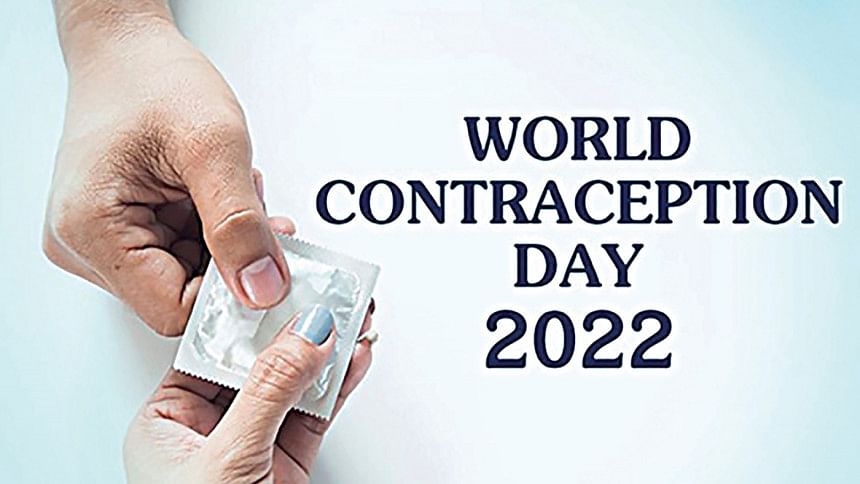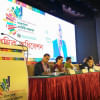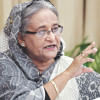World Contraception Day 2022: Reclaiming the reputation of Bangladesh

A woman's right to choose the number, timing and spacing of children is basic. Contraception is an integral part of decision-making. The benefits are manifold varying from maternal death and disability, newborn/child mortality and morbidity, unintended pregnancies to decreased abortion. Male and female condoms reduce sexually transmitted infections. Girls and women who can avail family planning have more opportunities to realise their potential; they can have education and contribute to the economy, leading to more prosperous, stable and equitable societies.
Each year, September 26 is observed as World Contraception Day to focus on the rights mentioned above. This is also mentioned in the 2030 Agenda for Sustainable Development Goals (SDG) under target 3.7, that states "by 2030, ensure universal access to sexual and reproductive healthcare services, including family planning, information and education, and the integration of reproductive health into national strategies and programmes."
Improved access to low-cost contraception and its uptake through family planning programmes reduce high-risk pregnancies, maternal and child mortality, unplanned pregnancies, and improved child health and nutrition. Studies showed that contraceptive use may have reduced maternal mortality by over 40%. Along with the family planning goals, better and additional options are needed to sustain progress to fight HIV and AIDS and other sexually transmitted infections.
The outcome of family planning is beyond health. It is multisectoral and even intergenerational. Improved child health and nutrition can positively influence academic performance and behaviour. On the other hand, education is a key determinant of the uptake and consistency in the use of family planning services. Contraception also expands the socioeconomic opportunities for girls and opens up more educational opportunities for adolescent girls.
Estimates for the economic impact of family planning have found a return of $120 for every dollar spent. Countries must respect and protect vital principles of non-discrimination, equality and privacy, bodily integrity, autonomy, dignity and well-being of individuals, especially concerning sexual and reproductive health rights.
While contraceptive use varies across the regions and women, low- and lower-middle-income countries face more obstacles to meet their contraception needs. Access to contraception is complicated and full of barriers for women experiencing multiple and intersecting forms of discrimination – such as immigrants, women with disabilities, low-income women, and sex workers.
In the context of the COVID-19 pandemic, women and adolescent girls have been placed at heightened direction and indirect risks of unwanted and unsupportable pregnancies due to lockdowns, service disruptions, stockouts, financial hardships and an increased risk of gender-based violence (GBV), including sexual violence. One year into the pandemic, 12 million women may have lost access to contraception, and 1.4 million unintended pregnancies may have occurred during 2020 across 115 low and middle-income countries, according to UNFPA estimates. These constraints have emerged in addition to the chronic obstacles, including lack of access to information on contraception, lack of comprehensive sexuality education, as well as harmful gender stereotypes and norms.
As demonstrated in several instances, contraception is not always as efficacious as indicated, and Governments and private companies should be held accountable in cases where defective contraceptives are circulated. Also, there are many cases where contraception methods fail. Therefore, access to safe and legal abortion services is crucial to ensure women's and girls' sexual and reproductive health rights.
Victims or survivors of sexual violence should avail emergency contraception and safe abortion procedures when a pregnancy results. It should be a standard protocol – its absence represents a violation of women's human rights.
Bangladesh context:
A Bangladesh Demographic and Health Survey (BDHS) reports that 62% of newly married women aged 15–49 years in Bangladesh use contraceptive methods, and 54% use a modern method. The rate of contraceptive use has increased significantly from eight percent in 1975, to 62% in 2014.
The Government of Bangladesh's pledge at the London Summit on Family Planning includes increasing contraceptive access and use among poor people in urban and rural areas and improving the choice and availability of long-acting and permanent methods (LAPMs). The Government plans to increase LAPM use by increasing the supply of materials and instruments needed for LAPMs, targeting low-performing areas, raising awareness and outsourcing programs to non-governmental organisations (NGOs) to cover hard-to-reach and low-performing areas.
The family planning programs in Bangladesh — which were once considered a role model for developing countries in particular — are facing daunting challenges in achieving the Contraceptive Prevalence Rate (CPR) target of 75.0% by 2021 to achieve the low replacement level of fertility. The challenges are even more severe because, in some regions of Bangladesh, the CPR is much lower for several decades, despite continuous interventions by the Government and NGOs.
Conclusion:
The funding and investment in contraception is inadequate almost everywhere. Governments should implement the legal obligations under human rights standards, and ensure respect and protection and fulfilment of sexual and reproductive health rights. They also should include a comprehensive and scientific sex education in the curricula.
The writer is a public health communication professional. E-mail: [email protected]

 For all latest news, follow The Daily Star's Google News channel.
For all latest news, follow The Daily Star's Google News channel. 








Comments